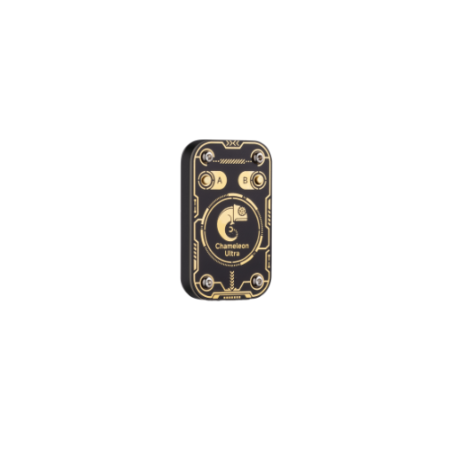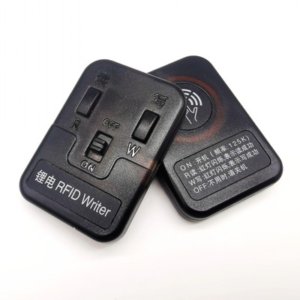Description
What is ChameleonUltra ?
The ChameleonUltra is a versatile RFID tool that can be used for a variety of purposes, including emulation, cloning, and testing of different RFID systems. Here’s how it works:
Emulation:
One of the key features of the Chameleon Ultra is its ability to emulate different types of RFID tags and systems. This means that the ChameleonUltra can be programmed to behave like a specific RFID tag or system, and can be used to test and validate the behavior of other RFID readers and systems.
To emulate an RFID tag or system, the ChameleonUltra can be programmed with specific data and commands using a programming language such as Lua. The ChameleonUltra can then transmit this data to other RFID readers and systems, which will interpret it as if it were coming from a real RFID tag.
Cloning:
Another feature of the ChameleonUltra is its ability to clone RFID tags. Cloning refers to the process of creating a copy of an existing RFID tag. This can be useful in situations where an RFID tag needs to be replaced, or when multiple copies of the same tag are required.
To clone an RFID tag using the ChameleonUltra, the device is placed in “tag emulation mode” and is programmed to behave like the target RFID tag. The ChameleonUltra can then be used to read the data from the target RFID tag, and this data can be written onto a blank RFID tag, effectively creating a clone of the original tag.
Testing:
The ChameleonUltra can also be used to test and validate the behavior of RFID readers and systems. By emulating different types of RFID tags and systems, the ChameleonUltra can be used to test the behavior of RFID readers and systems under different conditions.
For example, the ChameleonUltra can be programmed to emulate an RFID tag with a weak signal, or an RFID system that is operating at a different frequency. This can help to identify potential issues or weaknesses in RFID systems and can be used to optimize their performance.
What is ChameleonUltra from an engineer’s point of view?
An open-source, versatile, and portable tool using NRF52840 as the buildup of the hardware. It will carry most functions of the ChameleonMini & also the ChameleonTiny and we added so much more to it to bring a whole new surprise for the open-source community.
A/B button Function
Already implemented:
1. Click the A button to switch the card slot to the right. If the card slot is not enabled, it will automatically skip and switch to the next one.
2. Click the B button to switch the card slot to the left, and other features are the same as above.
3. In the sleep state, press and hold the B button, insert the data cable, and then release the B button to enter the UPDATE mode.
In the implementation plan:
1. Put a card on the chameleon, and click the A button to quickly copy the card number (standalone)
2. Click the button to forcibly acquire time-consuming tasks. For example, when planning to implement HardNested, you can press the button to end the collection of random numbers.
3. When connecting to Chameleon for the first time, you need to press and hold the A button, and then click Connect, otherwise, any API request will be rejected (to prevent errors or malicious connections to my Chameleon)
RGB Lighting Effect
Already implemented:
1. System startup animation
2. USB wake-up animation
3. BTN wake-up animation
4. FIELD wake-up animation
5. Shutdown animation
6. USB plug-in charging and communication animation
7. Click the button to switch the animation of the card slot
Tip: When the color of the card slot is R, the card slot is enabled with IC simulation + ID simulation at the same time.
When the color of the card slot is G, the card slot only enables IC card simulation,
When the card slot color is B, only ID card simulation is enabled for this card slot.
In the implementation plan:
1. More RGB dynamic effects, so that the use process can be accompanied by more prompt information with more concise RGB effects.
Technical Specifications
Parameter
- Battery Type:302020 rechargeable lithium-ion battery
- Charging Time:2 hours @ 0-100%
- Charging Current: 50mA(max)
- Standby Current: 35mA@4.15V Dual frequency card slot, 1.75mA@4.15V Single frequency card slot
- Simulation Current:2mA@4.15V MF1 Card Simulation Period Average
- Sleep Current:1uA@4.15V Mean 30s after dormancy
- Card Reading Current:02mA@4.15V hf 14a info during Execution
- Battery Capacity:90mAH
- Usage Time: Use the tag 3 times a day, power on for 5 seconds each time, can use up to 6 months
- Port Type: Type – C









Reviews
There are no reviews yet.